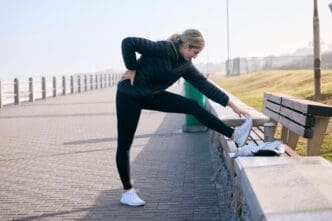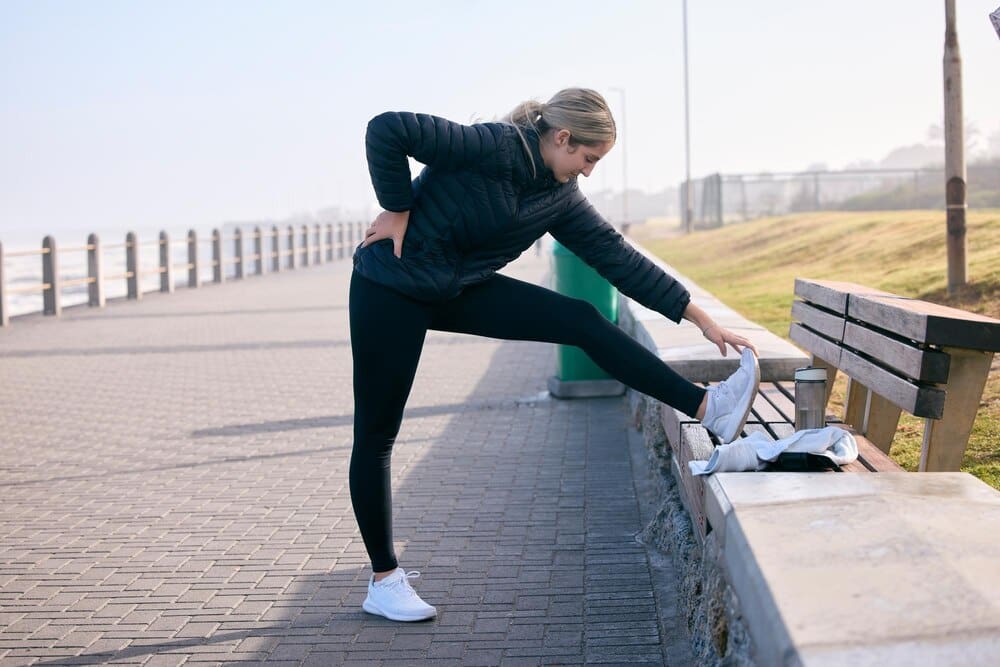For millions of runners, from weekend joggers to elite marathoners, lower back pain can be a frustrating and debilitating roadblock. The culprit is often not a weak back itself, but rather suboptimal running posture that places excessive, repetitive strain on the lumbar spine with every stride. By learning to run “tall” with an engaged core, a neutral pelvis, and a light, quick cadence, runners can transform their form to work with their body’s natural mechanics instead of against them. This conscious adjustment not only serves as a powerful defense against nagging back pain but also enhances running efficiency, reduces the risk of other injuries, and ultimately makes the sport more sustainable and enjoyable for the long haul.
Why Your Running Form Might Be Hurting Your Back
Running is a high-impact activity. With each footstrike, a force equivalent to several times your body weight travels up through your body. This is known as the ground reaction force. When your posture is aligned, this force is distributed efficiently through your muscles and joints, which are designed to absorb it. However, when your form breaks down, that force is channeled into areas not meant to handle it, like the small vertebrae and discs of your lower back.
Several common postural faults are prime suspects for causing this overload. One of the most frequent is over-striding, which involves landing with your foot far out in front of your body’s center of mass. This acts like a braking force, sending a jarring impact straight up your leg and into your spine.
Another major issue is an anterior pelvic tilt, where the pelvis tips forward, causing an exaggerated arch in the lower back. This posture, often exacerbated by tight hip flexors from prolonged sitting, compresses the lumbar spine and forces the back muscles to work overtime to stabilize your body.
Conversely, slouching with rounded shoulders and a forward-jutting head throws your entire kinetic chain out of alignment. This posture inhibits your ability to breathe deeply and forces the muscles in your neck and upper back to strain, with the tension often radiating downward and contributing to lower back discomfort.
The Anatomy of Good Running Posture: A Head-to-Toe Guide
Correcting your running posture isn’t about being rigid or tense. It’s about finding a relaxed, stacked, and athletic alignment that allows you to move powerfully and efficiently. Think of it as a checklist you can mentally review during your runs.
1. Head and Neck: Look to the Horizon
Where your head goes, the body tends to follow. Avoid the common mistake of looking down at your feet. Instead, keep your gaze fixed on the horizon, about 15 to 20 feet ahead of you. This simple cue naturally encourages a more upright posture.
Your head should feel light, with your ears aligned directly over your shoulders. Imagine a string is attached to the crown of your head, gently pulling you upward toward the sky. This helps to decompress the cervical spine and prevents that forward head jut that strains your neck and upper back.
2. Shoulders and Arms: Stay Relaxed and Efficient
Tension often accumulates in the shoulders, causing them to creep up toward the ears. Consciously relax your shoulders, letting them drop down and back. This opens up your chest, making it easier to breathe deeply and fully.
Your arms should act as pendulums, swinging primarily from the shoulder, not the elbow. Keep your elbows bent at roughly a 90-degree angle and allow your arms to swing forward and back. Avoid letting them cross over the midline of your body, as this creates unnecessary torque and rotation in your torso.
3. Torso and Core: The Powerhouse of Posture
Your core is the foundation of good running form. A strong, engaged core—which includes your abdominal muscles, obliques, and lower back—stabilizes your pelvis and spine. Focus on running “tall,” as if you are trying to maximize the space between your ribs and your hips.
To engage your core, gently brace your abdominal muscles as if you were about to be poked in the stomach. This helps maintain a neutral spine and prevents the excessive arching or slouching that puts pressure on your back. The goal is a stable torso that minimizes side-to-side wiggling or twisting.
4. Hips and Pelvis: The Center of Gravity
Your hips should be directly underneath your shoulders and torso, not trailing behind you. A key element of efficient running is a slight forward lean. Crucially, this lean should originate from your ankles, not from your waist. Bending at the waist will only strain your lower back and hamstrings.
To feel this, stand tall and then lean forward from your ankles until you feel like you have to take a step to catch yourself. That is the feeling you want to maintain while running. It uses gravity to help propel you forward, reducing the effort required from your leg muscles and minimizing braking forces.
5. Legs and Feet: Light, Quick Steps
Instead of reaching your leg out in front of you, focus on landing with your foot almost directly underneath your center of mass (your hips). This promotes a midfoot strike rather than a harsh heel strike and significantly reduces the impact traveling up your leg.
A great way to achieve this is by increasing your cadence, or the number of steps you take per minute. A quicker, lighter cadence naturally shortens your stride and encourages you to land underneath your body. You don’t need to obsess over a specific number, but simply trying to take slightly more steps per minute can dramatically improve your form and reduce impact forces.
Actionable Drills and Exercises to Build a Stronger Running Posture
Good posture during a run is built on a foundation of strength and mobility outside of the run. Integrating specific exercises into your routine can make proper form feel more natural and sustainable.
Strength Training for a Resilient Back
A strong core and posterior chain (the muscles on the back of your body) are non-negotiable for protecting your spine.
- Plank: This classic exercise teaches your body to maintain a rigid, neutral spine. Hold for 30-60 seconds, ensuring your hips don’t sag or rise too high.
- Glute Bridge: Lie on your back with your knees bent and feet flat on the floor. Squeeze your glutes to lift your hips toward the ceiling. This activates the gluteal muscles, which are critical for stabilizing the pelvis.
- Bird-Dog: Start on all fours. Extend your right arm forward and your left leg backward simultaneously, keeping your back flat and your core engaged. This challenges your balance and spinal stability.
- Bent-Over Rows: Using dumbbells or a resistance band, this exercise strengthens the muscles of the upper back (rhomboids and lats), which helps pull your shoulders back and prevent slouching.
Mobility and Flexibility Work
Stiffness, particularly in the hips and upper back, can force your body into poor postural patterns.
- Cat-Cow Stretch: On all fours, gently alternate between arching your back (Cat) and dropping your belly (Cow). This is excellent for improving the mobility of your thoracic (upper) spine.
- Kneeling Hip Flexor Stretch: Tight hip flexors pull the pelvis forward. Regularly stretching them can help you achieve a more neutral pelvic position.
- Foam Rolling: Using a foam roller on your upper back can help release tension and improve thoracic extension. You can also roll your glutes, hamstrings, and quads to address muscle tightness.
Beyond Posture: Other Factors in Running-Related Back Pain
While form is paramount, other variables can contribute to back pain and should not be overlooked.
The Role of Footwear and Surfaces
Your shoes are your first line of defense against impact. Ensure you are running in shoes that are appropriate for your foot type and gait, and replace them every 300-500 miles as their cushioning degrades. Whenever possible, try to vary your running surfaces. Softer surfaces like dirt trails, grass, or a rubberized track are more forgiving on the body than concrete or asphalt.
Listen to Your Body: Avoiding Overtraining
Too much, too soon is a classic recipe for injury. If you dramatically increase your mileage or intensity without giving your body time to adapt, the supporting muscles for good posture can fatigue. When these muscles give out, your form breaks down, and your spine pays the price. Build your training volume gradually and ensure you are incorporating adequate rest and recovery days.
Ultimately, running with better posture is a skill that requires conscious practice and consistent reinforcement. It’s a holistic process that combines mindfulness during your runs with dedicated strength and mobility work off the road. By investing in your form, you are not just taking steps to eliminate back pain; you are building a more resilient, efficient, and powerful foundation that will allow you to enjoy the freedom of running for years to come.







